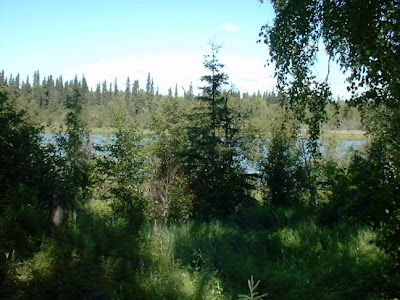
Saturday, October 4, 2008
Thursday, September 18, 2008
bering strait bridge project

________________________________
Discovery Channel has a great piece on this engineering marvel which is still in conceptual phase.
The Bering Strait bridge or Bering Strait tunnel, if ever constructed, would be a bridge or tunnel spanning the Bering Strait between Cape Dezhnev, Chukotka, Russia, and Cape Prince of Wales, Alaska, United States.
Another name suggested is Eurasia-America Transport Link. Whatever the name, the construction of such a bridge or tunnel would face unprecedented engineering, political, and financial challenges, and to date, no government has authorized the start of any planning or construction.
Nor it would any time soon given how busy US is in political/military activities around the world with economy and business taking a heavy toll right now.
What ever the state of union, just the idea of such a tunnel is akin to dreaming about landing on the moon.
Sunday, August 10, 2008

Imagining the North The uncharted North fired the imagination of Europeans and North Americans in the 19th and early 20th century. Many believed in a warm open ocean existed, on the other side of a ring of ice. John B Sheldon of Hillville, New Jersey believed that the pole was made out of diamond. But the idea of a perpetually frozen landscape was alien to farming peoples in the warm and fertile south. Few people, in Russia or the West could conceive of a life among the sophisticated hunter gatherers who had lived in the Arctic for millennia. Credit: Face to Face Media

Norilsk, originally build by slave labour, is the largest of the mining and smelting cities built above the Arctic Circle. With a population of more than 250,000, the it was a model city in the Soviet plan. But the smelters emit a million tons of sulphur a year, polluting the Arctic and damaging the tundra. The cost of maintaining the northern cities has proven prohibitive and more than a million residents are expected to leave. Photo credit: AMAP (Arctic Monitoring and Assessment Program)

A Saami family of reindeer herders, on the Kola Peninsula, ca 1910 . The mild climate, rich nickel deposits, and strategic location of the Kola peninsula attracted the attention of the new Soviet government. Settlers began moving north in the 1920s and collectivization of reindeer herds began before World War II. The current Saami population in Russia is around 2000, largely concentrated in the village of Lovozero. Photo credit: Lovozero Museum
Arctic boreal forest
Temperatures are rising



 The Arctic’s average temperature increases are nearly twice that of the rest of the world. Over the past 50 years average temperatures in the Arctic have increased as much as 7 degrees Fahrenheit. In the next 100 years some areas in the Arctic may see an increase in average temperatures as high as 13 degrees Fahrenheit.
The Arctic’s average temperature increases are nearly twice that of the rest of the world. Over the past 50 years average temperatures in the Arctic have increased as much as 7 degrees Fahrenheit. In the next 100 years some areas in the Arctic may see an increase in average temperatures as high as 13 degrees Fahrenheit.As temperatures rise in the Arctic, sea ice and glaciers are melting at an unprecedented rate. Over the past 30 years, 386,000 square miles of Arctic sea ice have melted away, an area larger than Texas and Arizona combined. The latest observations suggest that Arctic sea ice could completely disappear by 2020.
Subscribe to:
Comments (Atom)
















